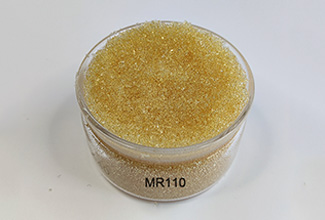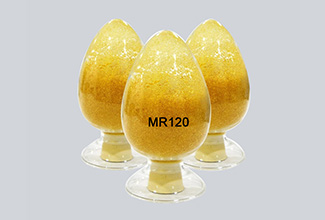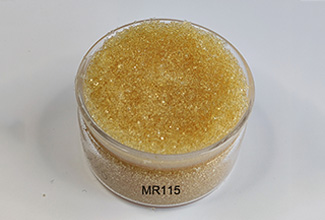Ion Exchange Device Crisis - Mixed Bed System Effluent Quality Deterioration
The effluent quality is the main indicator to measure the operating condition of chemical desalination equipment. The deterioration of effluent quality refers to the middle of the operation cycle, the conductivity and SiO2 content of the demineralized water is significantly higher than the commissioning results, regardless of whether its water quality indicators are qualified, it can be considered that the phenomenon of deterioration of effluent quality has occurred.
When the conductivity or SiO2 content of the demineralized water is significantly higher, the pH value of the demineralized water needs to be measured in order to determine the cause of the problem. Based on the measurement results, we can determine the deterioration of the water quality of the desalination equipment and find the cause of the problem. Below we analyze the reasons for the deterioration of water quality in mixed bed systems.
(1) Increase in the amount of dewatering water. The increase of drenching water in mixed-bed system is due to cross-contamination of resin, such as NaOH and strong acid cation resin mixed into the anion bed, the presence of sodium salt on the cation resin, or HCl (H2SO4) and strong base anion resin mixed into the cation bed, the presence of chlorine (sulfate) on the anion resin.
Cross-contamination is mainly due to mixing of the resin on the partition surface. In this case, sodium and chlorine (sulfate) leakage increases, which increases the drenching time. Experience has shown that although flushing sodium leakage is troublesome, its effect is less severe than sulfate ion leakage, which is particularly consequential in condensate purification systems, where the common method is to recirculate the effluent water, which is time-consuming.
The use of three-layer mixed-bed resin can reduce the cross-contamination of the regenerant to the cation and anion resin, so that the mixed-bed drenching water is too large to improve the drawbacks.
(2) The quality of the effluent is reduced. The mixed bed system requires that the cation and anion resins must be fully mixed. If the cation and anion resin is not mixed well, in many parts or stratified state, the quality of the water will be reduced. An important thing is that the water layer in the upper part of the resin bed must be less than 5cm when air mixing, if the resin bed is not hydrophobic to the above water level first, then no matter how intense the air mixing is, when the mixing stops, the resin will settle by gravity according to the density difference, so that the cation and anion resin will be stratified, and the above problem will arise.
It is recommended to use anti-conventional mixed bed resin, which can not only make the cation and anion resins completely stratified during backwashing, but also can be evenly mixed after regeneration, which solves the mixing problem of mixed bed resin.

When the conductivity or SiO2 content of the demineralized water is significantly higher, the pH value of the demineralized water needs to be measured in order to determine the cause of the problem. Based on the measurement results, we can determine the deterioration of the water quality of the desalination equipment and find the cause of the problem. Below we analyze the reasons for the deterioration of water quality in mixed bed systems.
(1) Increase in the amount of dewatering water. The increase of drenching water in mixed-bed system is due to cross-contamination of resin, such as NaOH and strong acid cation resin mixed into the anion bed, the presence of sodium salt on the cation resin, or HCl (H2SO4) and strong base anion resin mixed into the cation bed, the presence of chlorine (sulfate) on the anion resin.
Cross-contamination is mainly due to mixing of the resin on the partition surface. In this case, sodium and chlorine (sulfate) leakage increases, which increases the drenching time. Experience has shown that although flushing sodium leakage is troublesome, its effect is less severe than sulfate ion leakage, which is particularly consequential in condensate purification systems, where the common method is to recirculate the effluent water, which is time-consuming.
The use of three-layer mixed-bed resin can reduce the cross-contamination of the regenerant to the cation and anion resin, so that the mixed-bed drenching water is too large to improve the drawbacks.
(2) The quality of the effluent is reduced. The mixed bed system requires that the cation and anion resins must be fully mixed. If the cation and anion resin is not mixed well, in many parts or stratified state, the quality of the water will be reduced. An important thing is that the water layer in the upper part of the resin bed must be less than 5cm when air mixing, if the resin bed is not hydrophobic to the above water level first, then no matter how intense the air mixing is, when the mixing stops, the resin will settle by gravity according to the density difference, so that the cation and anion resin will be stratified, and the above problem will arise.
It is recommended to use anti-conventional mixed bed resin, which can not only make the cation and anion resins completely stratified during backwashing, but also can be evenly mixed after regeneration, which solves the mixing problem of mixed bed resin.

Last One :
Next Article :
Related Products
-
 MR110 Mixed Bed Ion Exchange ResinAppearance: Yellow-brown spherical particles.Ionic form:H+/OH-Volume complete exchange capacity(mmol/ml):≥0.6
MR110 Mixed Bed Ion Exchange ResinAppearance: Yellow-brown spherical particles.Ionic form:H+/OH-Volume complete exchange capacity(mmol/ml):≥0.6 -
 MR120 Electronic Grade Polishing Ion Exchange ResinAppearance: Yellow-brown spherical particles.Ionic form:H+/OH-Volume complete exchange capacity(mmol/ml):≥0.6
MR120 Electronic Grade Polishing Ion Exchange ResinAppearance: Yellow-brown spherical particles.Ionic form:H+/OH-Volume complete exchange capacity(mmol/ml):≥0.6 -
 MR115 Mixed Bed Ion Exchange ResinAppearance: Yellow-brown spherical particles.Ionic form:H+/OH-Volume complete exchange capacity(mmol/ml):≥0.6
MR115 Mixed Bed Ion Exchange ResinAppearance: Yellow-brown spherical particles.Ionic form:H+/OH-Volume complete exchange capacity(mmol/ml):≥0.6
Message

